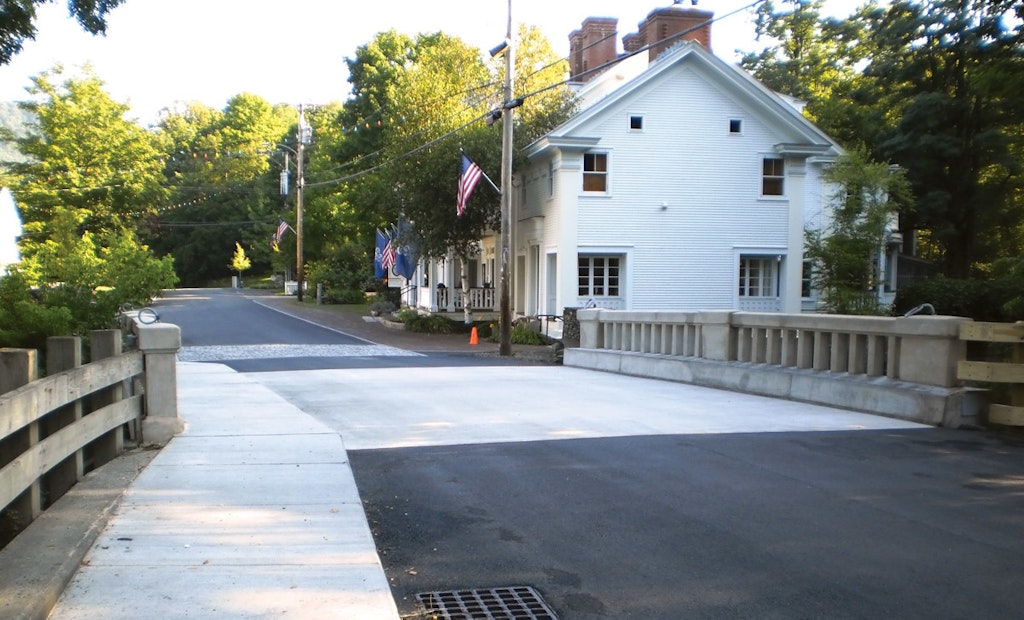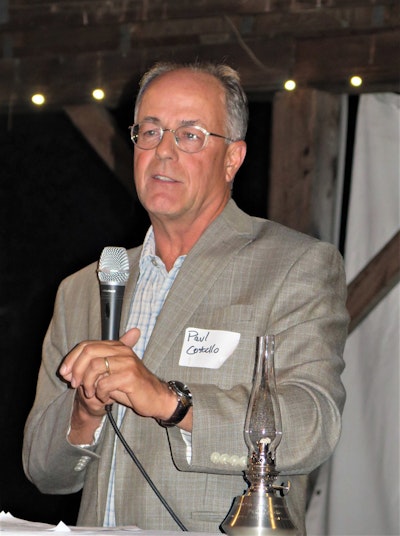
A community septic system ensured preservation of the historic Pitcher Inn, built during the Civil War and now an upscale inn and restaurant/tavern in Warren, Vermont.
It’s becoming increasingly difficult for small towns across Vermont to remain economically viable. The reason? A lack of public wastewater treatment systems, which curtails efforts to build or expand homes and commercial buildings.
But the town of Warren and a handful of other communities have taken an innovative approach to this vexing economic development problem: A community septic system, in which individual septic and pump tanks are connected via a sewer line to a large waste tank that distributes to multiple drainfields.
So far, these towns are the exception to the rule. In fact, almost two-thirds of the state’s villages — some 200 in all — have no public wastewater infrastructure. Instead, residents and businesses typically rely on individual septic systems, generally located on lots too small to accommodate bigger systems needed for expansion.
“The economies in some of these small towns are stagnating,” says Paul Costello, executive director of the Vermont Council on Rural Development, which helps small towns and villages create economic development plans and identify funding sources to make them a reality.
“The fundamental challenge is attracting young people and entrepreneurs,” he explains. “But in smaller towns, there’s not enough housing for them. Many people in small villages rely on individual septic systems that have become outmoded over time … and newer systems are expensive, which undermines the development of new housing.
“So the bottom line is there’s increasing interest in shared septic systems,” he continues. “But that requires analyzing a town’s needs and figuring out how to build a funding package that can succeed politically.”
Shared systems are expensive to build. As such, it can be difficult to convince residents in small communities to support bond issues to fund such projects. Even a small shared system for 50 to 200 people might cost $10 million or more, he says.
A MODEL FOR SUCCESS
The historic and picturesque town of Warren, population roughly 1,600, provides other small Vermont municipalities with a blueprint for funding and building a successful shared decentralized system. The town’s journey began about two decades ago, when failing drainfields on five individual septic systems and one that served an elementary school spurred officials into action.
A chief concern was the health of the Mad River, into which some of the failed drainfields were leaching. Water-quality tests performed by a local environmental group, Friends of the Mad River, showed increasing levels of bacterial contamination.
Another concern was the economic viability of the historic Pitcher Inn, built during the Civil War and now an upscale inn and restaurant/tavern, and the Warren Store, built in 1839 as an inn and boarding house and now an old-fashioned country general store.
The inn and the store are the two largest businesses in town and also are popular tourist attractions in central Vermont’s Mad River Valley, says Cindi Jones, town administrator.
THE SWITCHOVER
The decentralized system was installed in two phases. The main component is a cluster system with a 50,000-gallon septic tank coupled with 12 drainfields, located under a 2-acre field that’s part of the grounds of an elementary school. The town uses only half of the drainfields at a time, rotating from even-numbered fields in one year to odd-numbered fields in the next, Jones explains.
Effluent from septic tanks is dispersed, either by gravity or by pump, to a main sewer line that runs through the town. From there, three pump stations send the effluent to a fourth pump station, which further filters the effluent before pumping it into the 50,000-gallon tank. (The elementary school has its own septic system.)
The system serves 74 of the town’s 95 parcels. (Some property owners opted out of the project). The properties connected to the system include the Pitcher Inn, the Warren Store, some municipal buildings, various small businesses and about 50 homes, Jones says. Most residential tanks are 1,000 gallons, she says.
GRANTS HELPED OUT
The total cost of the project was around $4.6 million. Grants from the U.S. Environmental Protection Agency and the state of Vermont paid for approximately $3.7 million of that. The town took out a loan in the form of municipal bonds to pay for the balance, a report shows.
The Mad River Planning District worked with two Vermont-based consultants, Forcier Aldrich & Associates (now Aldrich + Elliott) and Stone Environmental, to determine the best course of action and find funding sources. A citizens’ advisory committee created a community outreach/education program to obtain input from residents as well as marshal support for a bond issue.
The town is responsible for managing both the onsite and cluster systems. Tanks get inspected and outlet filters cleaned annually. If tanks are more than 8 inches full, they’re pumped out, Jones says. “The main tank at Brooks Field gets pumped every 12 to 13 years,” she says.
An operation and maintenance budget, funded by user fees, pays for all costs associated with managing the system, including scheduled and unscheduled maintenance. User fees are determined by a formula that includes the number of bedrooms or living units. The average fee is around $657 annually for a two-bedroom home and about $840 for a three-bedroom home, Jones says.
“We’ve had very few maintenance issues,” she notes. “The system seems to work very well. I frequently get calls from other communities that want information about it.”
ECONOMIC VITALITY RESTORED
The bottom line: The decentralized wastewater system has been vital to attracting new businesses and promote more real estate development, Jones says. There remains ample extra capacity to handle additional residential and commercial business development.
“Economically, it was a great thing for the town of Warren and a great thing for keeping the river clean,” she points out. “If we hadn’t done something, I don’t think the Pitcher Inn would still be here and maybe not the Warren Store, either.
“If they both folded, there wouldn’t be much in Warren,” she says.
“It would be pretty quiet around here.”






